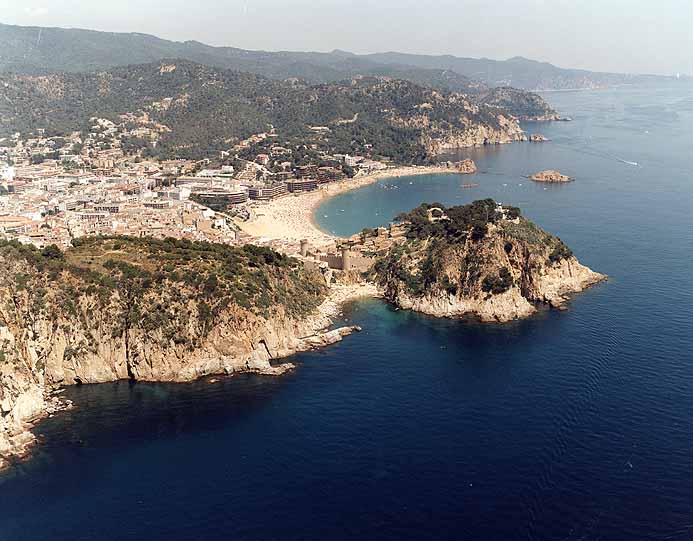
Earliest history has it that , in 1236, a preaching Friar (Ramon de Penyafort) arrived at Tossa de Mar and legend says that the rocks opened so that he could land on the beach. Tossa de Mar has managed to escape the worst end of the tourist market and it possess a refreshing atmosphere of quality that is missing in nearby Lloret de Mar, Blanes and Malgrat de Mar. The town avoided the blight of the coastal railway line that forges its way along the beachfront of all coastal towns from Barcelona to Blanes permitting Tossa de Mar to remain rustic and more traditional. Tossa is like an open-air museum where prehistoric remains overlap with Roman Turissa, medieval Tursa and today's Tossa, one-time a retreat for artists and intellectuals and now a town for Spanish tourists and foreign visitors.
The history of Tossa de Mar is extense and there is ample evidence of settlements dating back to the Neolithic period, and it is believed that the area has been continuously populated since that time. Between the 4th century BC and the 1st century BC appeared the first settlements of the Iberians, followed shortly after by the Romans in the 1st century.
The most noteworthy of the Roman villas in the area is undoubtedly Els Ametllers,
Els Ametllers (1st c. BC - 6th c. AD), discovered in 1914 by Dr Ignasi Melé, was one of the most important villas in the ancient Roman province of Tarraco. This is a classic example of a Roman Mediterranean farming establishment, where vineyards were tended and large quantities of wine were exported.
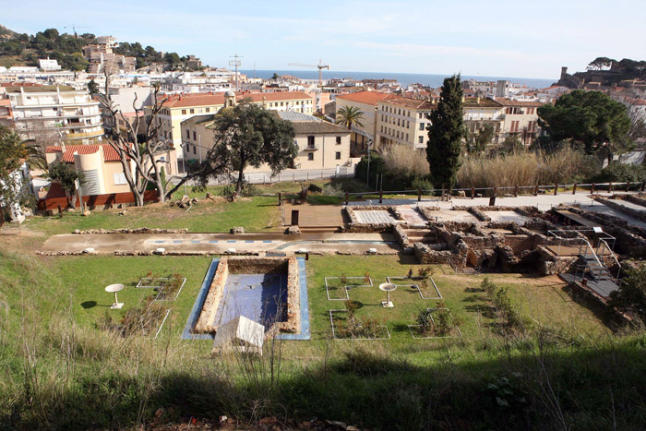
The noble dwelling area on the upper level of the site, reflects the overall magnificence of this villa, especially in the 2nd century AD. Its exceptional splendour can be seen in the fine thermal baths, the mosaics and stuccos, the unusual winter dining room, the fountain (nymphaeum) and the bathing pool with its impressive Carrara marble sculptures (now kept in Tossa Municipal Museum).
The functional area on the lower level, had grain houses and other rooms used for processing the villa’s agricultural produce, e.g. wine, oil and salted goods.
Bone and ivory styluses, ceramics, coins and brooches (fibulae) on display in Tossa Municipal Museum bear witness to the daily life of the villa.
In 966 Tossa was ceded by Count Miró of Barcelona to the Abbey of Ripoll. Some two centuries later, in 1187 Tossa was granted its charter by the Abbot of Ripoll, coinciding with the building of a church atop Mount Guardí, the remnants of which can still be seen today.
During the 12th century the mediaeval town was walled off and a castle was built on the highest point of Mt. Guardí, this castle was to be subsequently replaced by a wind mill, and this in turn by a lighthouse which is still operational.
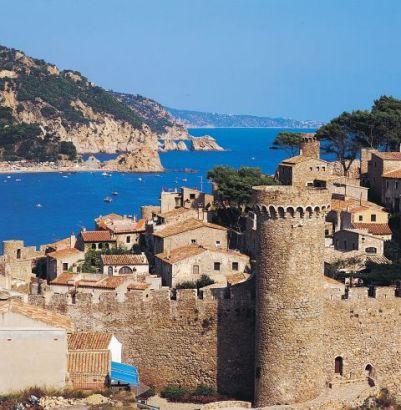
The emblematic walled Vila Vella or Old Town of Tossa is the sole remaining fortified medieval town on the Catalan coast and was listed as an artistic-historic monument in 1931. The original perimeter walls and battlements are largely conserved, with four large towers and three machicolated cylindrical towers. The best-known towers are Joanàs Tower overlooking the bay; Clock Tower at the entrance to the parade ground, thus named because it was the only public clock in the town; and Codolar Tower (or Keep), overlooking Codolar beach. The rectangular castle with a watchtower at the top of the Vila Vella was replaced by the present-day lighthouse.
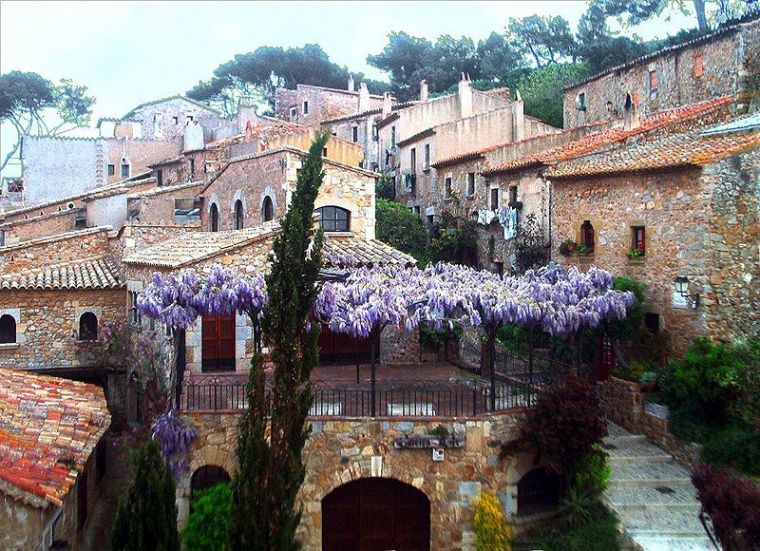
The Vila Vella itself is a charming place with narrow cobbled streets. In the 15th and 16th-century age of splendour, the town boasted eighty houses. A superb voussoired entrance gate gives access to the Vila Vella via the former parade ground. In the 16th century, however, the town started to expand beyond the walls, with the first extra-mural houses built in Sa Roqueta district along the highroad.
Inside the Vila Vella there are the remains of the late-Gothic 15th-century church of Sant Vicenç. The church had a single nave and a 3-sided polygonal chevet; the west arm of the transept was made up of the sacristy and a side chapel; the east arm probably opened out into a row of three chapels. Today, the only remaining covered parts are the apse and the sacristy. The pointed arch of the chevet is sustained by six ribs meeting at a keystone decorated with an image of St Vincent.
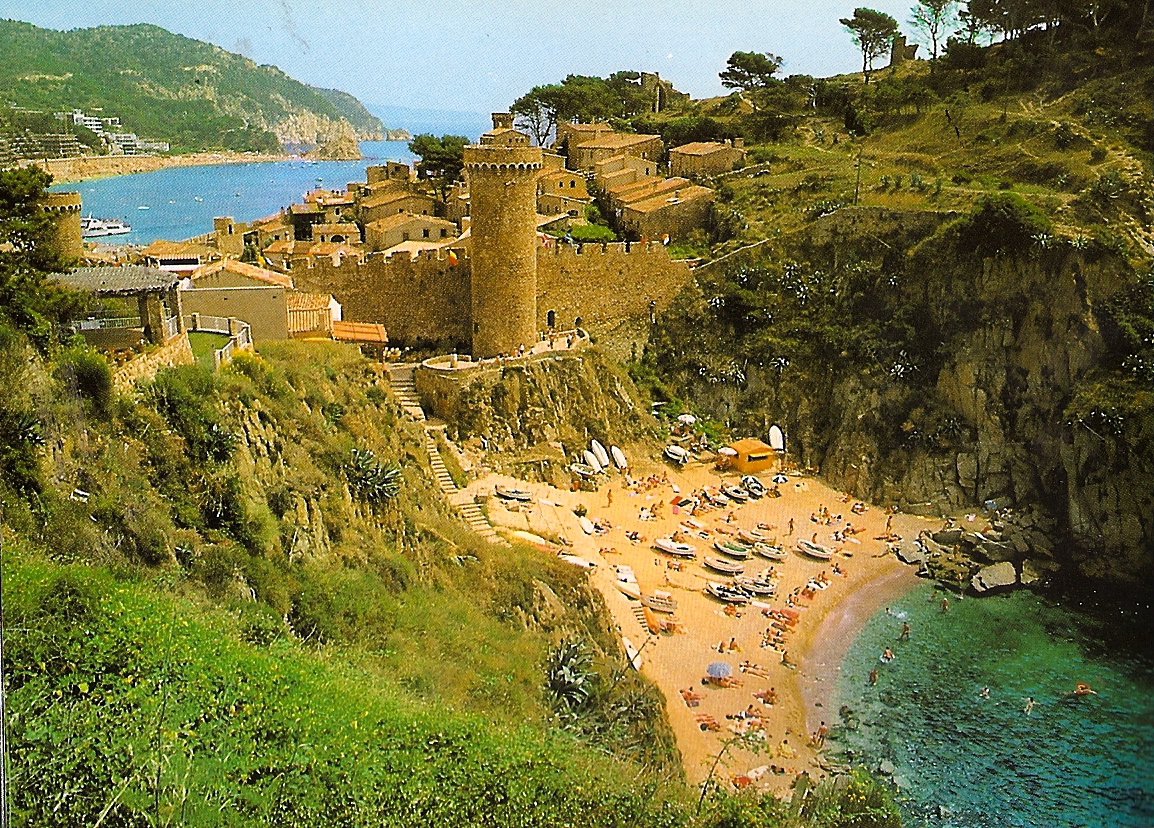
Tossa de Mar has three main beaches: The Tossa Beach (Platja Gran), in front of downtown. This beach is enclosed to the west by the medieval castle. It is 380m long and 60m wide; La Mar Menuda, on the other side of the bay which is180m long and 20m wide. And finally El Codolar, a beautifully secluded and protected beach which falls behind the walls of the old town. Tossa de Mar has always been a progressive town and In 1989 it was the first place in the world to declare itself an Anti-Bullfighting City.
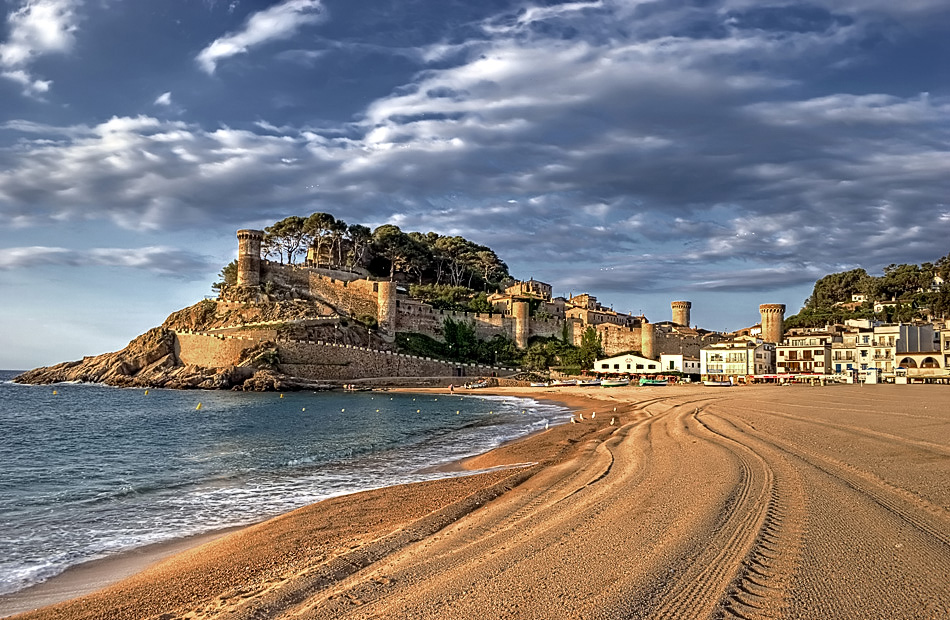
Ver mapa más grande